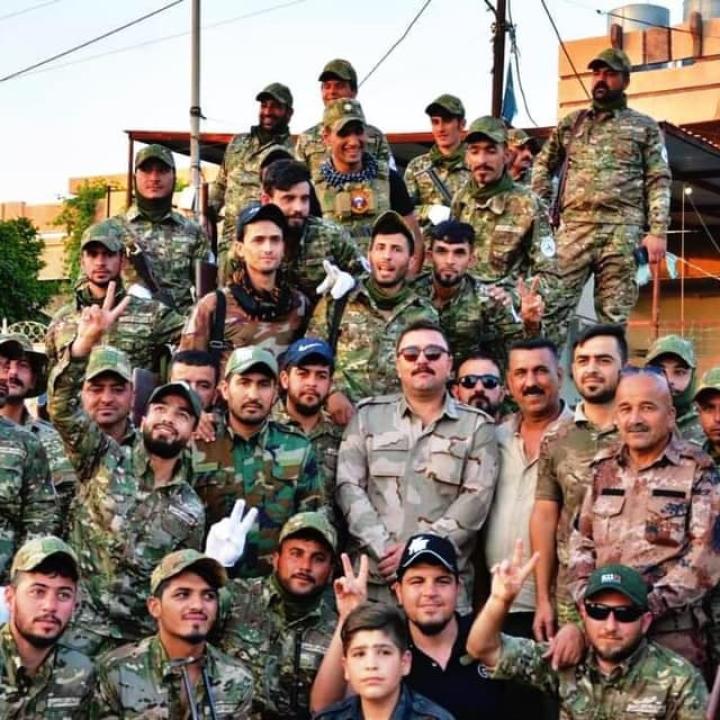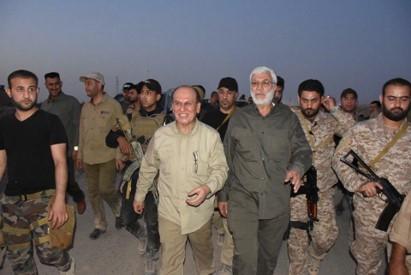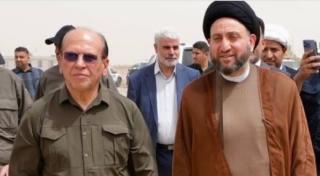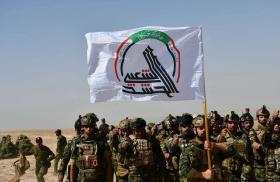
Militia Schisms: The Dissolution of the PMF Northern Axis

The fall (for now) of a senior Turkmen protege of Abu Mahdi al-Muhandis is a reminder that fortunes, favor, and factions are always shifting within the Iran-backed "resistance" scene.
On July 26, Iraqi Popular Mobilization Forces chairman Faleh al-Fayyad issued an order dissolving the PMF Northern Axis, a headquarters that has held sway over local security in a string of Turkmen towns between Kirkuk and Amerli since 2014. The action marks the culmination of nearly two years of cut-and-thrust maneuvering between different Shia Turkmen factions in the area, which is collectively known by the Turkmen minority as “Turkmenli,” a kind of ethic enclave encompassing Taza Khormatu, Daquq, Tuz Khormatu, Sulayman Beg, and Amerli.
The big loser was the ten-year commander of the Northern Axis, the Tuz Khormatu-based Abu Ridha Yilmaz al-Najjar, who appears to have been removed. This is a stark turnaround from the kerfuffle that Militia Spotlight reported in May 2023, when tensions emerged in the area and Najjar came out as the winner. At the time, he was seemingly bolstered by the mediation of Haj Ali Iqbalpour, the longstanding Kirkuk liaison officer from Iran's Islamic Revolutionary Guard Corps-Qods Force (IRGC-QF).
The big winner this time was Hamid Ibrahim Abdal-Reda al-Sahlani (aka Abu Hussam), another Turkmen PMF commander from the Turkmenli corridor. Whereas Najjar was based out of the "Martyr’s Camp" between Tuz Khormatu and Amerli at the southern end of Turkmenli, Sahlani controls the Taza Khormatu camp that sits at the northern end, adjacent to Kirkuk city. Sahlani first challenged Najjar in May 2023, attempting to supplant the Northern Axis with his own Kirkuk and East Tigris Operations Command. He was rebuffed at the time but won the latest round; he now appears to be spearheading a fusion of the Northern Axis and the East Tigris Operations Command.
What changed since 2023 is that Najjar and his Martyr’s Camp crew seemingly overplayed their hand. In April 2024, a militia attack using an Iranian-supplied Shahed-101 X-tail drone killed four foreign contractors at the Khor Mor gas plant near Tuz Khormatu. The attack came from the Northern Axis area under the control of Najjar, subordinate commanders such as Abu Thaer al-Bashiri of Quwwat al-Turkmen (the 16th PMF Brigade), and various bodyguard units that Najjar was growing into the 61st and 63rd PMF Brigades. Khor Mor had been attacked repeatedly from the Northern Axis area since 2022, but this April's lethal strike was apparently the last straw—it led to Kurdish counterfire on Northern Axis areas and spurred the PMF’s own security department to arrest eleven Northern Axis personnel. (Four of these suspects were released in July; the other seven apparently remain in custody.) In May, Faleh al-Fayyad began pushing back on Najjar's expansion of his command via the budding 61st and 63rd Brigades.
Currently, Sahlani and his deputy Yilmaz Shabbaz Abbas Ibrahim, a Turkmen commander based in Tuz, are merging the Northern Axis and East Tigris Operations Command at a moment when non-PMF security forces are jockeying for position in the Turkmenli corridor. The non-PMF East Tigris Operations Command—headquartered at Heliwah air base in Tuz (the old FOB Bernstein) and led by Army general Ali Mashgal Khalaf Badr al-Maliki—closely overlaps the area of the PMF Northern Axis. A new Joint Special Brigade of Kurdish Peshmerga and Iraqi Army forces developed with U.S. assistance was due to deploy into the gaps between federal and Kurdish frontlines around Kirkuk and Tuz this year. Yet militia elements such as Kataib Jund al-Imam (6th PMF Brigade) have turned up at Daquq with the apparent aim of preventing this joint force from taking position or extending too close to Turkmenli villages. Notably, the Turkmenli corridor and the Ghaeda subdistrict southwest of it are among the Islamic State's last remaining areas of regular activity in Iraq.
What does all this mean for the balance of power within the self-styled muqawama (Iran-backed "resistance") in Iraq? First, it suggests that even powerful local figures like Najjar—a protege of the late militia chief Abu Mahdi al-Muhandis—can lose IRGC support and fall from grace if they make public mistakes, attack the wrong targets, and "go off the leash."
Second, it may indicate that Badr Organization leader Hadi al-Ameri, who backs Sahlani, is reclaiming some of Badr’s longstanding interest in the Turkmen militia scene between Kirkuk and Amerli. Years ago, Najjar and certain other former Badrists got themselves even more powerful friends in the Muhandis era and threw off Ameri’s control, but he may have turned the tables this year.
Third, it suggests that Najjar’s connections to more aggressive subgroups within Kataib Hezbollah are worth looking into, perhaps casting light on why his Northern Axis was so involved in attacks on Khor Mor and why (for now) he has fallen. More broadly, the incident shows how fluid the PMF's command dynamics remain, with pieces shuffling all the time and Fayyad largely staying on the right side of Ameri and at least some parts of Kataib Hezbollah.






